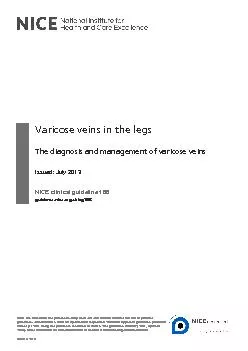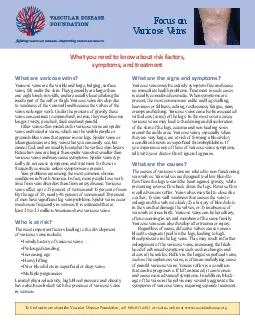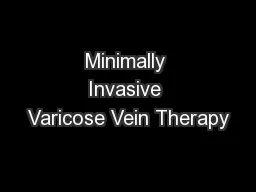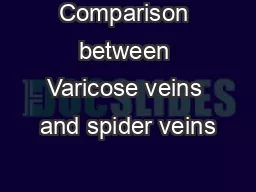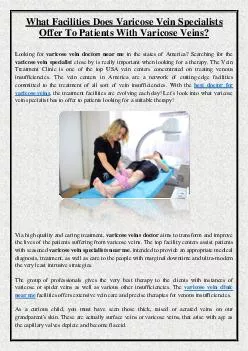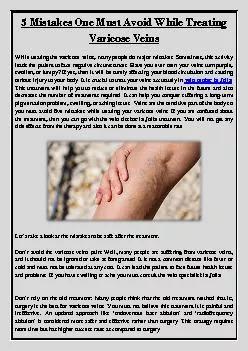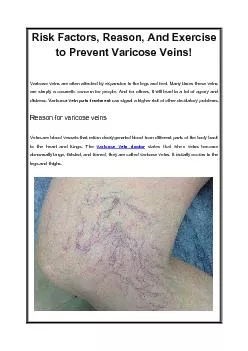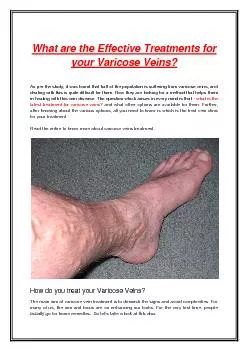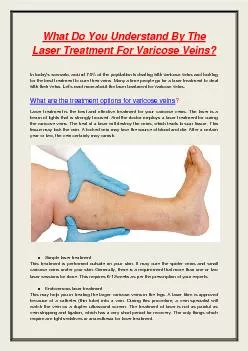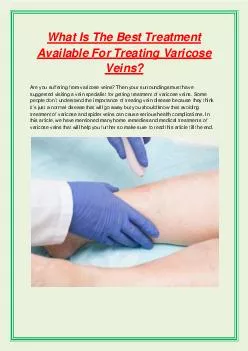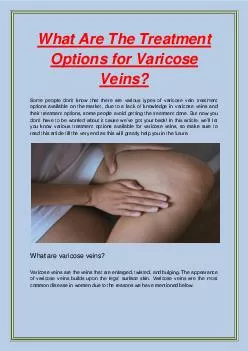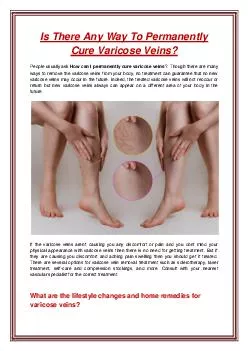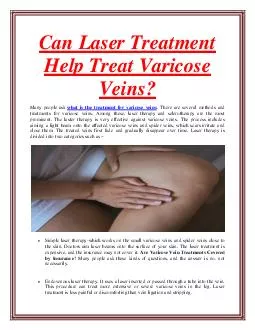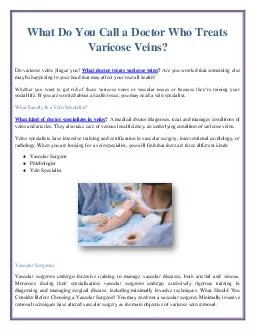PDF-Varicose veins in the legs
Author : marina-yarberry | Published Date : 2015-12-01
The diagnosis and management of varicose veins Issued July 2013 NICE clinical guideline 168 guidanceniceorgukcg168 NICE has accredited the process used by the Centre
Presentation Embed Code
Download Presentation
Download Presentation The PPT/PDF document "Varicose veins in the legs" is the property of its rightful owner. Permission is granted to download and print the materials on this website for personal, non-commercial use only, and to display it on your personal computer provided you do not modify the materials and that you retain all copyright notices contained in the materials. By downloading content from our website, you accept the terms of this agreement.
Varicose veins in the legs: Transcript
Download Rules Of Document
"Varicose veins in the legs"The content belongs to its owner. You may download and print it for personal use, without modification, and keep all copyright notices. By downloading, you agree to these terms.
Related Documents

